What’s the first dish that comes to mind when you think of Belgian food?
For many people, it’s Belgian waffles. For seafood lovers, it’ll probably be moules frites. If your favorite hour is happy hour, then the first thing that comes to your mind may not be a dish at all, but Belgian beer.
These are all perfectly acceptable answers, but there’s so much more to Belgian cuisine than the dishes and drinks that have become popular in the global mainstream.
If you have a curiosity for local food, then be sure to try these twenty traditional Belgian dishes on your next trip to Brussels and Belgium.
FOOD IN BELGIUM QUICK LINKS
If you’re planning a trip to Belgium and want to really learn about Belgian cuisine, then you may be interested in joining a Belgian food or drinking tour.
TOURS & OTHER SERVICES
- Belgian Food Tours: Food and Drinking Tours in Belgium
- Belgian Cooking Classes: Cooking Classes in Belgium
- eSIM: Belgium eSIM
Save This on Pinterest!
No time to read this article on traditional Belgian foods? Click on the save button and pin it for later!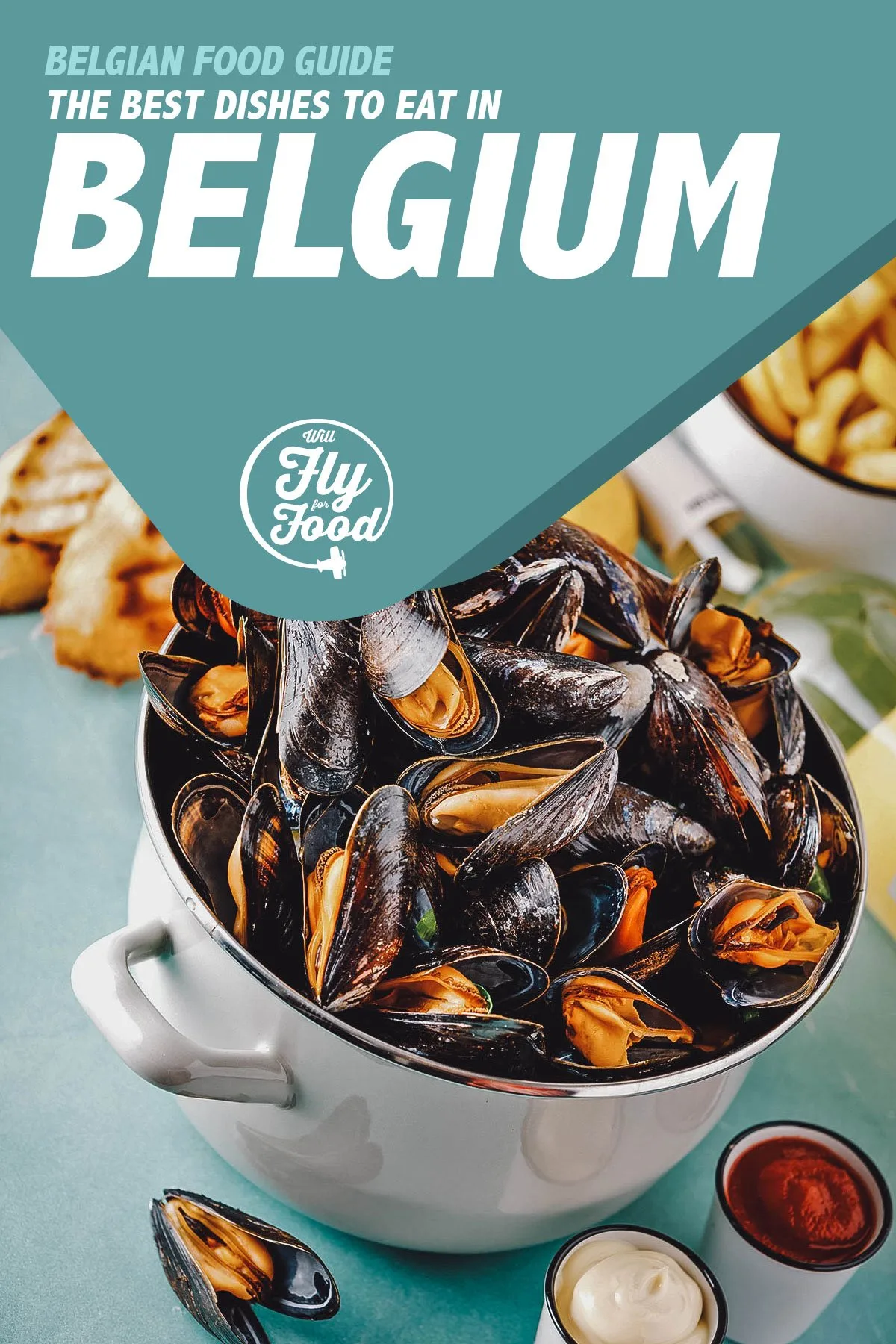
Photo by klenova
WHAT IS TRADITIONAL BELGIAN CUISINE?
There’s a saying that “Belgian food is served in the quantity of German cuisine but with the quality of French food“. Belgian cuisine varies widely from region to region and draws influences from the cuisines of neighboring France, Germany, and the Netherlands.
The foreign influences and regional differences that characterize Belgian cuisine are consistent with the fact that Belgium is divided into three main regions – Flanders (bordering the Netherlands), Brussels (capital), and Wallonia (bordering France). Flemish food is heavily influenced by Dutch cuisine while the Walloon region boasts a regional cuisine that’s more in line with the French style of cooking.
Regional and seasonal ingredients like potatoes, Belgian endives, Brussels sprouts, and grey shrimp are prized in traditional Belgian cooking. Pork is the most widely consumed meat followed by poultry and beef. Mussels, the main component in moules frites, are the most popular choice of seafood.
If mussels and fries sound appealing to you, then you’re going to love Belgium. Like waffles and frites, it’s the country’s national dish.
Aside from being served as a side dish with mussels or steak, frites (Belgian fries) are the most popular snack food in Belgium and something you can enjoy pretty much anywhere in the country.
MUST-TRY BELGIAN DISHES
This Belgian food guide has been organized by category to make it easier to go through. Click on a link to jump to any section of the guide.
STARTERS / SNACKS / SIDES
1. Waffles
As described, the Belgian waffle is arguably the most recognizable Belgian dish outside of the country. It refers to cakes made from leavened batter or dough cooked between two specially designed plates called a waffle iron. The waffle iron gives the cake its characteristic shape, size, and surface texture – commonly a checkered pattern on the top and bottom of the waffle.
While waffles are regarded mainly as breakfast food in other parts of the world, in Belgium, they’re commonly eaten as street food, either plain or topped with different ingredients like whipped cream, chocolate, powdered sugar, and fruits.
There are dozens of regional waffle variations in Belgium but the two most common are Liège waffles and Brussels waffles.
Liège Waffles
Liège waffles are the most common type of waffle in Belgium. It’s a denser, richer type of waffle made with a thick brioche-like dough and chunks of pearl sugar that caramelize on the waffle’s surface when cooked. Originally from the greater Wallonia region of Eastern Belgium, they’re typically made in plain, cinnamon, or vanilla versions.
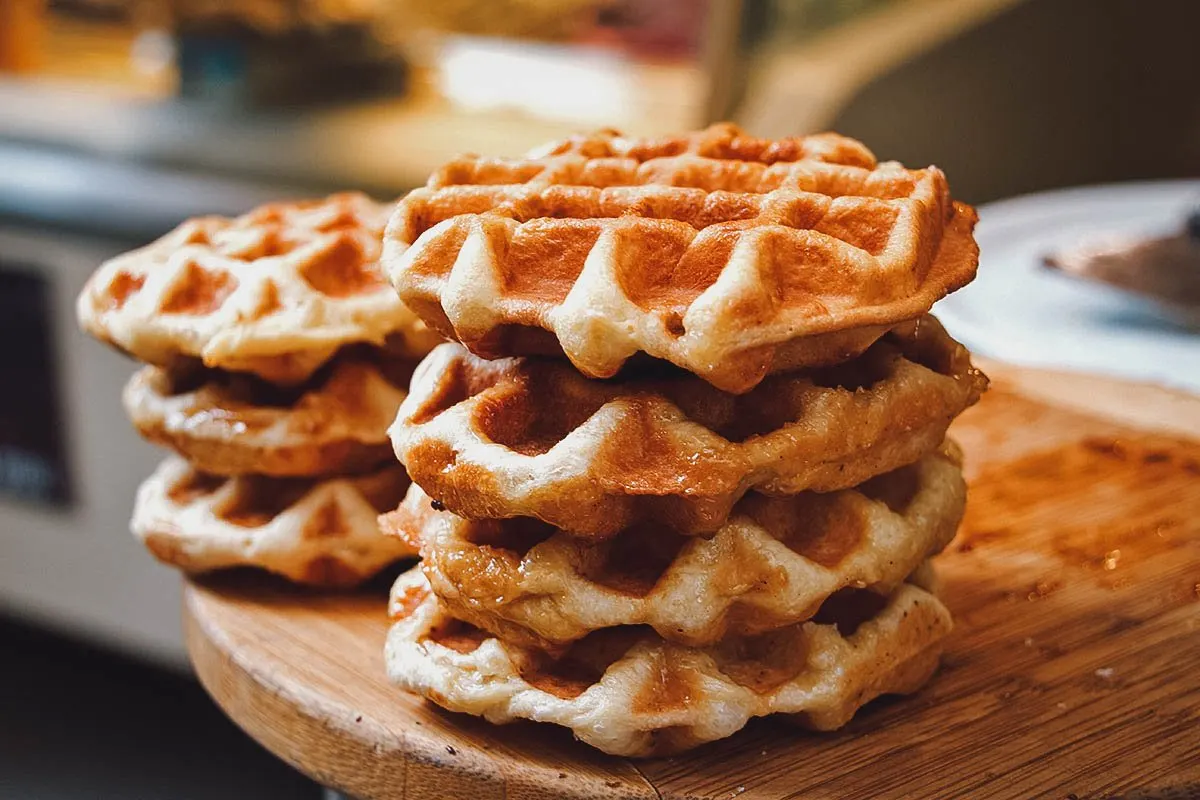
Photo by DeborahKolb
Brussels Waffles
The Brussels waffle is the Belgian waffle that most North Americans are familiar with. It’s a lighter, crispier type of waffle made with a thinner and runnier egg-white- or yeast-leavened batter. They’re made in a characteristic rectangular shape with bigger and deeper pockets.
Brussels waffles were popularized in the US in the 1960s. After realizing that many Americans couldn’t identify Brussels as the capital of Belgium, they eventually became known as “Belgian waffles”.
In Belgium, Brussels waffles are commonly dusted with confectioner’s sugar but they can be topped with whipped cream, fruit, and chocolate spread as well.
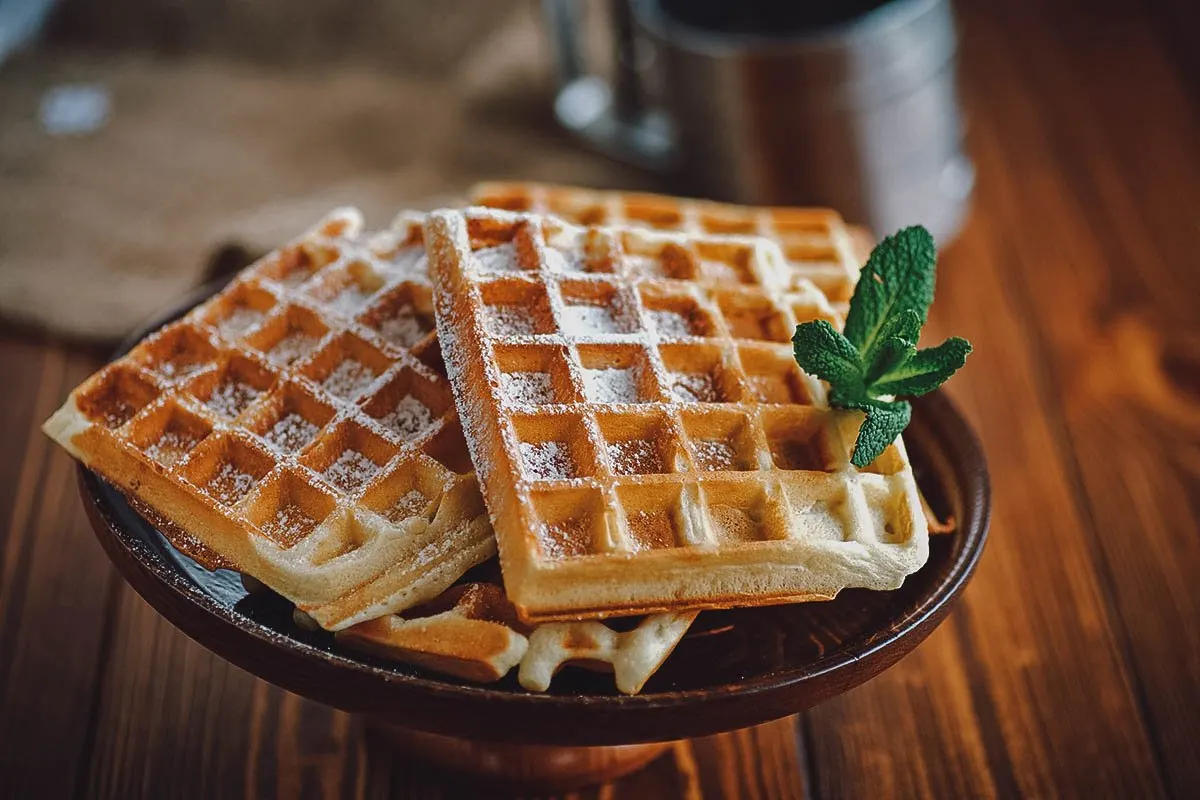
Photo by Rawlik
2. Frites (Belgian Fries, NOT French Fries!)
Fries are a globally adored snack or side dish and we have France to thank for that. Or should we be thanking Belgium? Although they’re known as French fries in most parts of the world, there’s an ongoing debate between France and Belgium as to the true origin of these delicious deep-fried potatoes.
Fries were first mentioned in a Parisian book in 1775. However, Belgians claim that the dish was invented in Belgium almost a century earlier in the fish-loving city of Namur. The Meuse River froze over in the winter of 1680, forcing the locals to cook potatoes instead of the small fish they were accustomed to.
But if frites really are of Belgian origin, then why is the word “French” in front of “fries”? One theory suggests that the term “French” may describe the dish’s method of preparation, not its origin. “Frenching” refers to a julienne-like method of cutting ingredients to expose all sides for even cooking.
Regardless of where they’re originally from, we can all agree that crispy Belgian fries (frites in French, frieten in Flemish) are delicious and something you’ll probably snack on often in Belgium. Cut no more than 1 cm (0.4 in) thick, they’re double-fried in a mixture of horse and cow fat and always served with some type of sauce or dip like mayonnaise, curry ketchup, andalouse sauce, or samurai sauce.
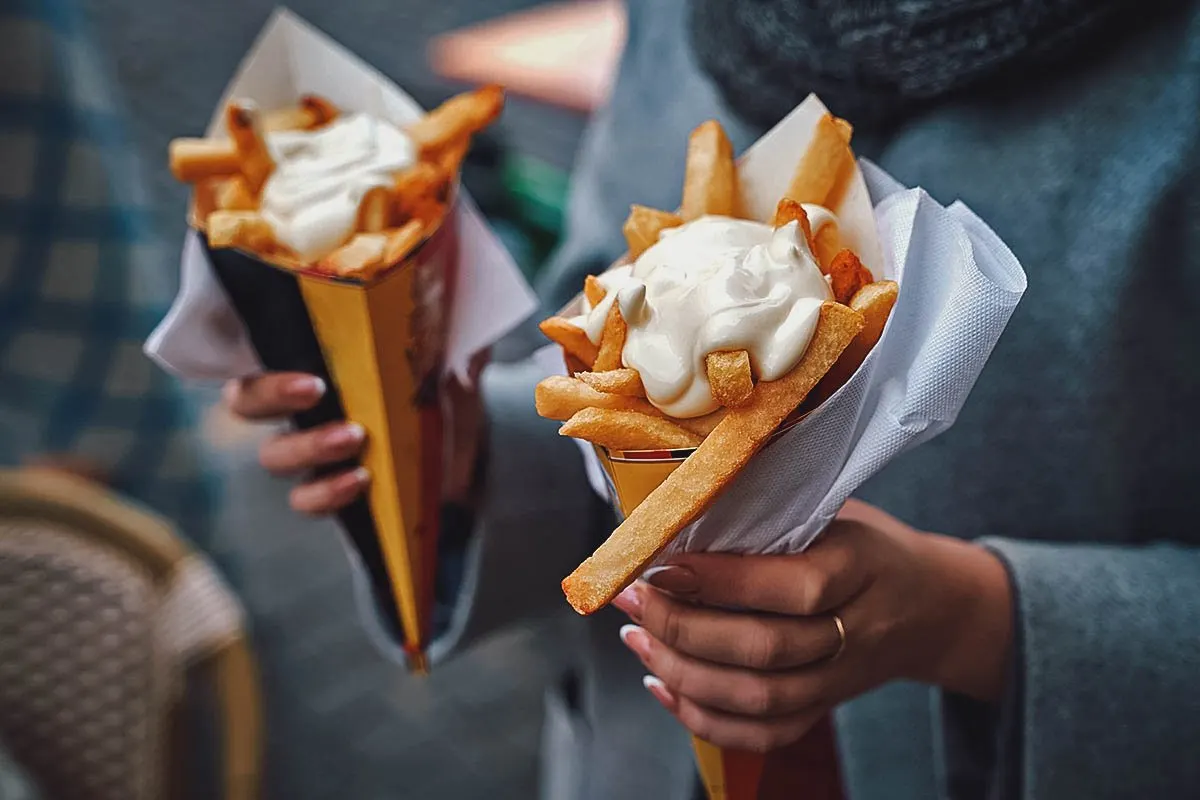
Photo by oleksandrberezko
3. Stoemp (Belgian Mashed Potatoes)
Stoemp refers to the Belgian version of mashed potatoes. They’re made with pureed or mashed potatoes mixed with other ingredients like bacon, cream, onions, leeks, cabbage, herbs, and spices.
Often served as a side dish, stoemp is typically made with potatoes though it can be made with other types of root vegetables as well.
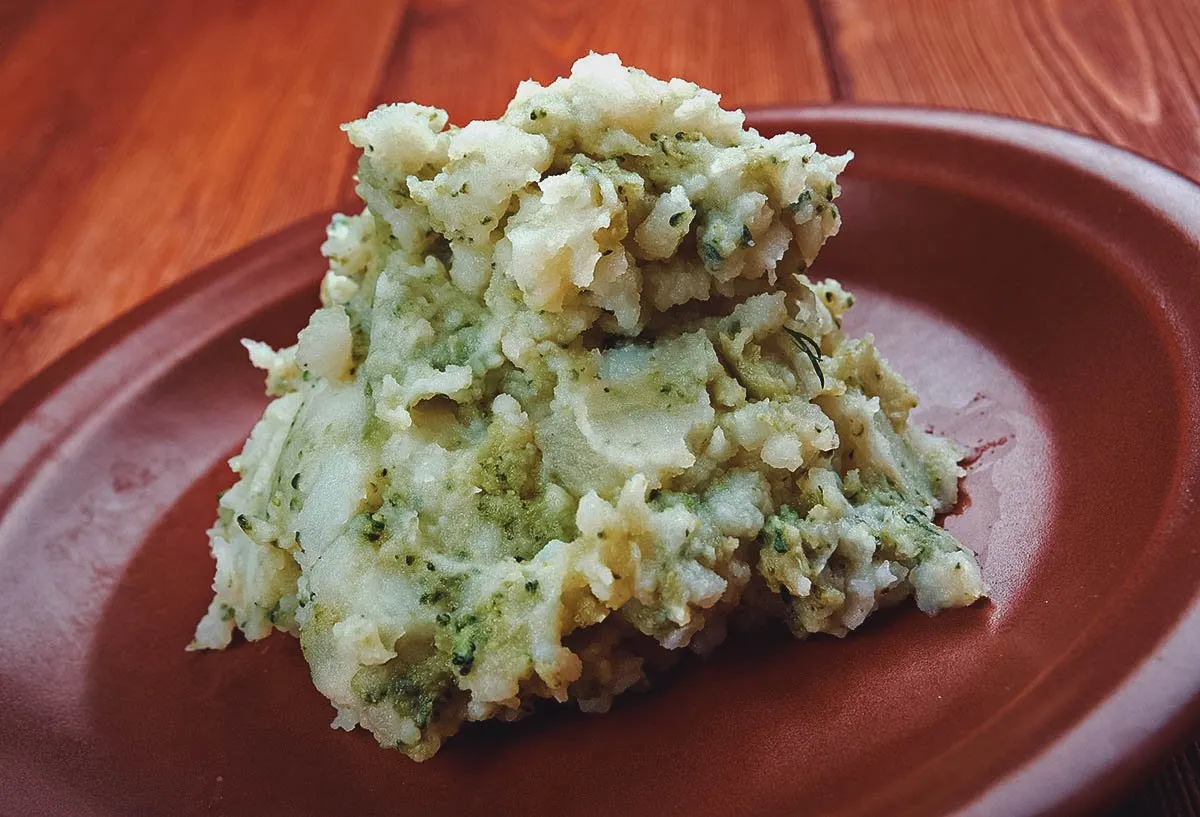
Photo by fanfon
4. Frikandel
Frikandel is a type of deep-fried skinless sausage. Popular as a snack in Belgium and the Netherlands, it can be enjoyed on its own, in a bun, or sliced through the middle and filled with different sauces and ingredients like chopped onions, mayonnaise, chili sauce, and curry ketchup.
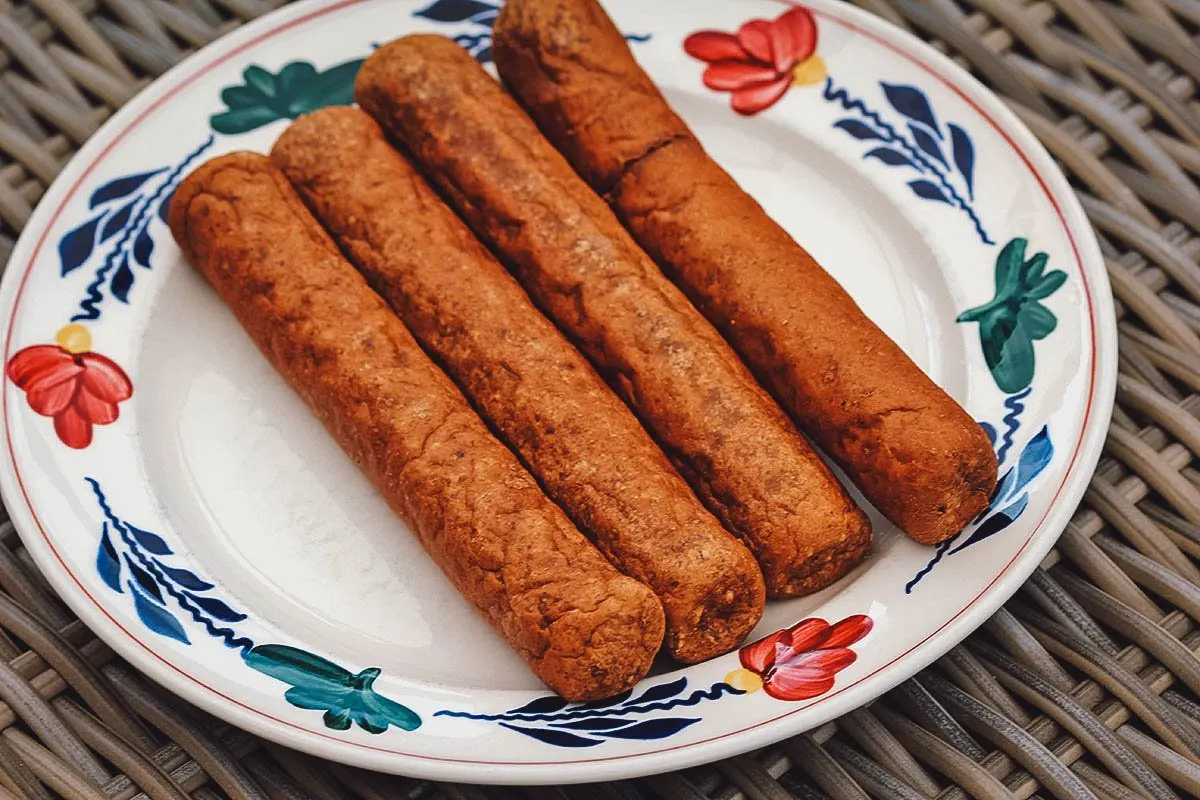
Photo by [email protected]
5. Boudin
Boudin refers to another type of Belgian sausage that’s also popular in France. It’s typically made from pork though it can also be made with chicken or veal.
Boudin in Belgium is made in two main varieties – boudin noir (black) and boudin blanc (white). The former (pictured below) gets its deep red to almost black color from the addition of blood.
In comparison, boudin blanc is much lighter and paler in color. It contains no blood and is often made with milk and fresh herbs.
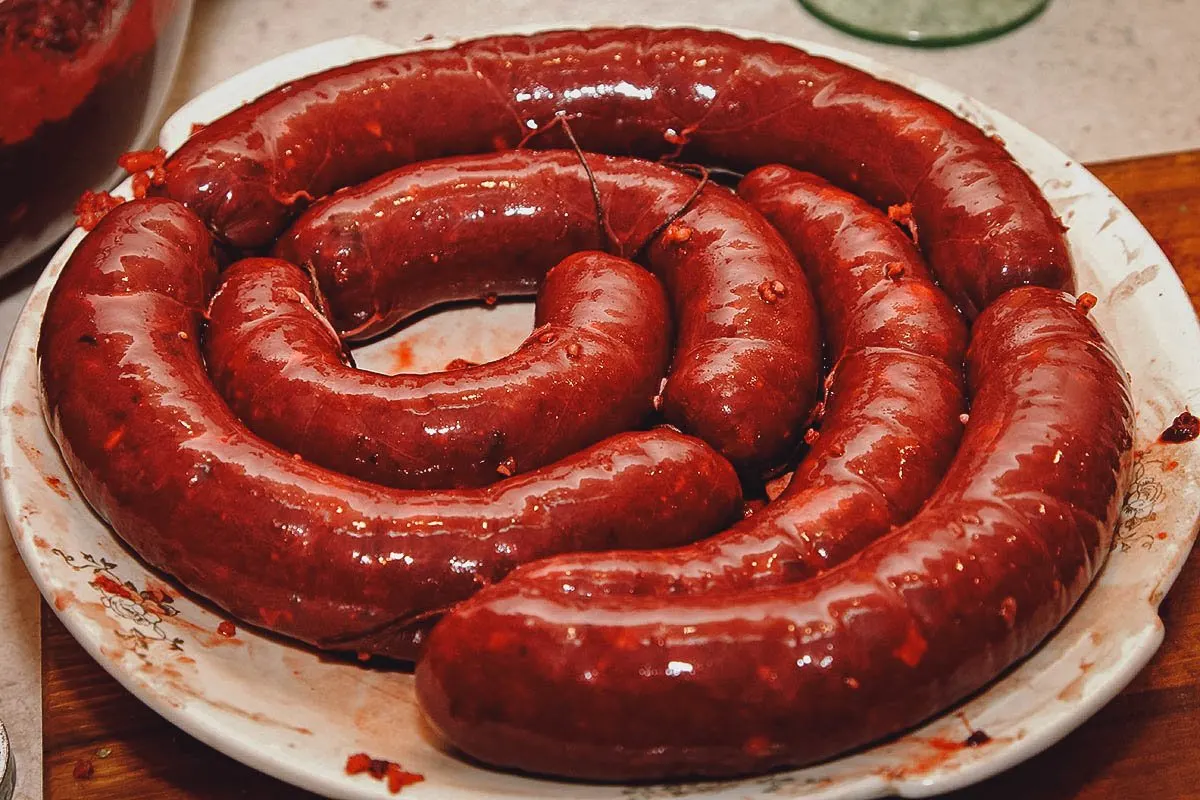
Photo by aija444
6. Filet Americain
If you have a taste for raw meat, then you’re going to enjoy filet americain. It refers to the Belgian version of steak tartare made with premium cuts of lean raw beef minced in a meat grinder.
Like steak tartare, filet americain needs to be made with the freshest meat to make it safe for consumption. After grinding, the meat is seasoned with salt and pepper and flavored with different ingredients like raw eggs, onions, capers, mayonnaise, mustard, and Worcestershire sauce.
Filet americain is typically enjoyed as a spread on crackers, as a sandwich filling, or as an entree with a side of Belgian fries and salad. Its name literally translates to “American fillet”. How it got that name no one seems to know, other than perhaps its inventor, Joseph Niels.
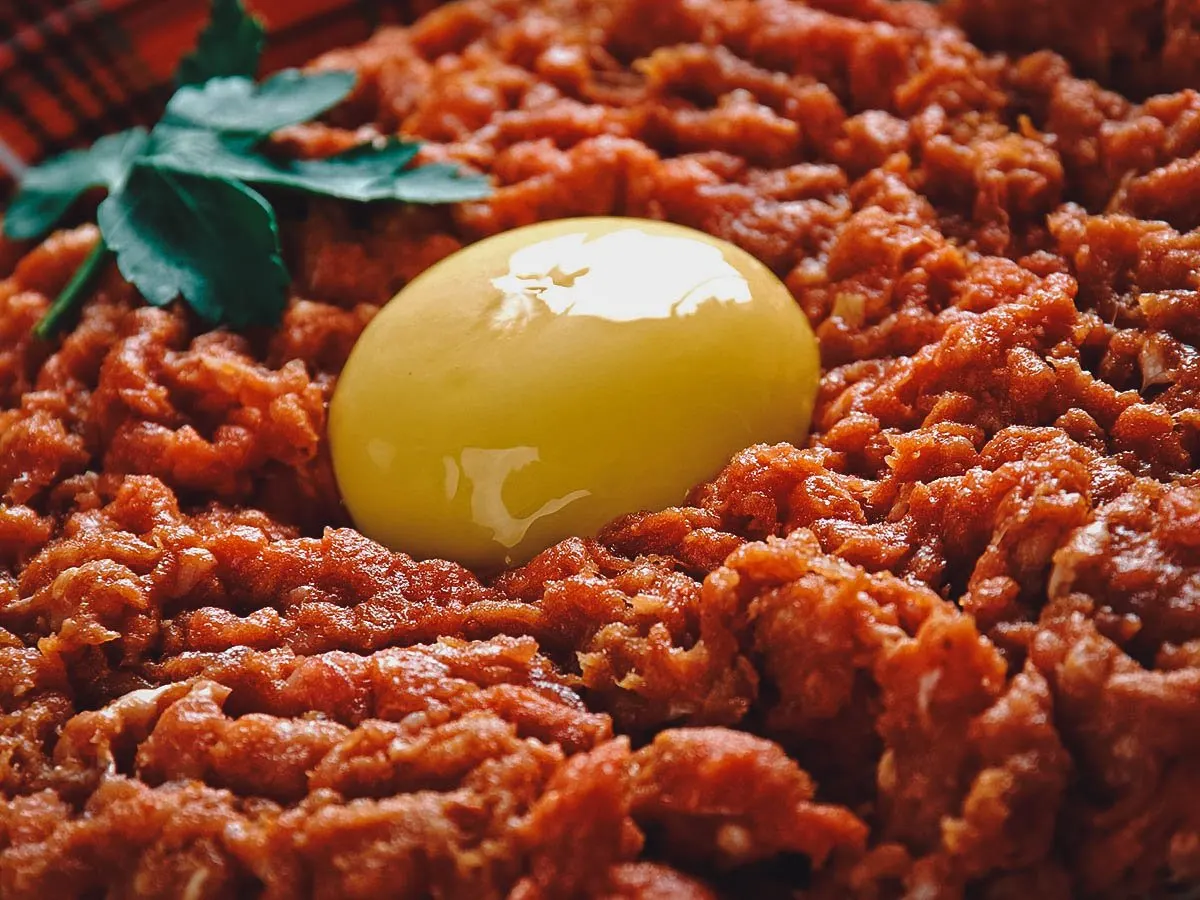
Photo by fanfon
SEAFOOD
7. Moules Frites
Moules frites (or moules et frites) is a traditional Belgian dish made with mussels and fries. Like waffles and Belgian frites, it’s one of the most popular dishes in Belgium and widely considered to be a national dish.
The mussels in moules frites can be cooked in different ways, but the most common preparation is moules marinière, where the mussels are cooked in white wine, butter, shallots, and parsley. Other common preparations include moules à la bière (beer instead of white wine) and moules parquées (raw mussels served with a sauce made from lemon juice and mustard).
Regardless of how the mussels are cooked, the fries are usually served separately to keep them from getting soggy. This dish is so popular in Belgium that an estimated 25-30 tons of mussels are used each year to prepare moules et frites.
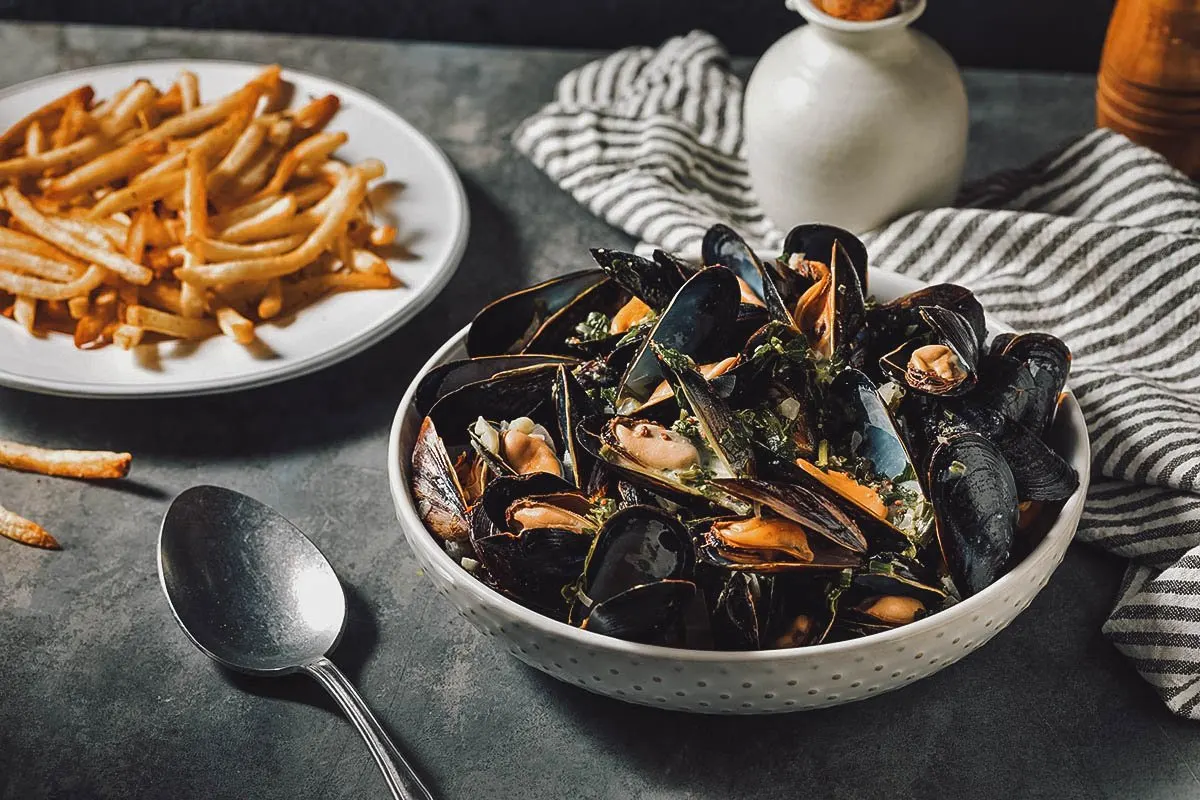
Photo by bhofack2
8. Paling in ‘t Groen
Palin in ‘t groen refers to a Flemish stew of freshwater eel cooked in a green sauce made from white wine and a variety of fresh herbs like parsley, mint, tarragon, sage, and dill. Also known as anguilles au vert in French, its name literally means “eel in the green”.
Palin in ‘t groen is typically eaten with Belgian fries or bread, often with a spritz of lemon juice over the eel.
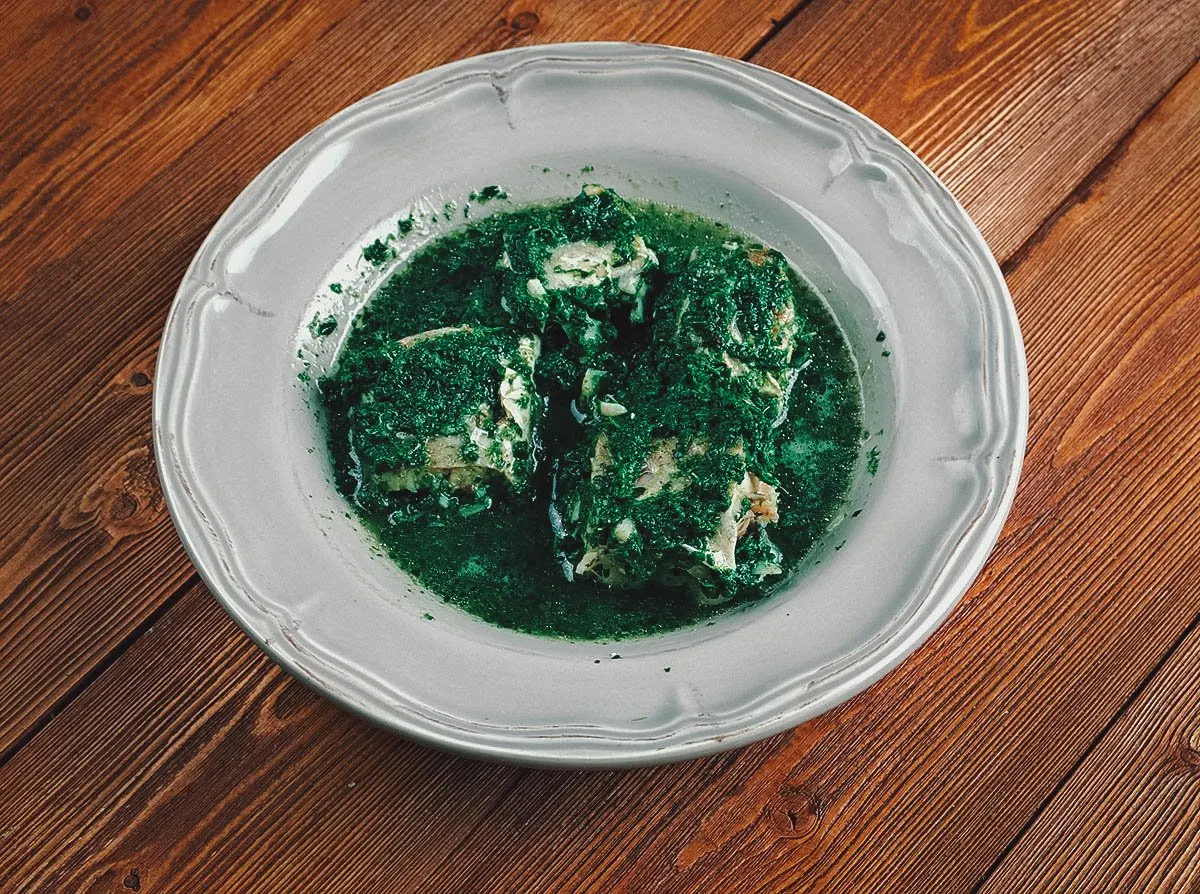
Photo by bhofack2
9. Waterzooi
Like paling in ‘t groen, waterzooi is a type of Belgian stew that originated in Flanders, specifically in the city of Ghent. It’s made with chunks of fish or chicken served in a vegetable broth thickened with egg yolk and cream.
Originally, waterzooi was made with fish, but due to the pollution in the rivers around Ghent, it’s now more commonly made with chicken. Depending on the cook, it can be enriched with a variety of different vegetables and herbs like onions, carrots, potatoes, parsley, and thyme.
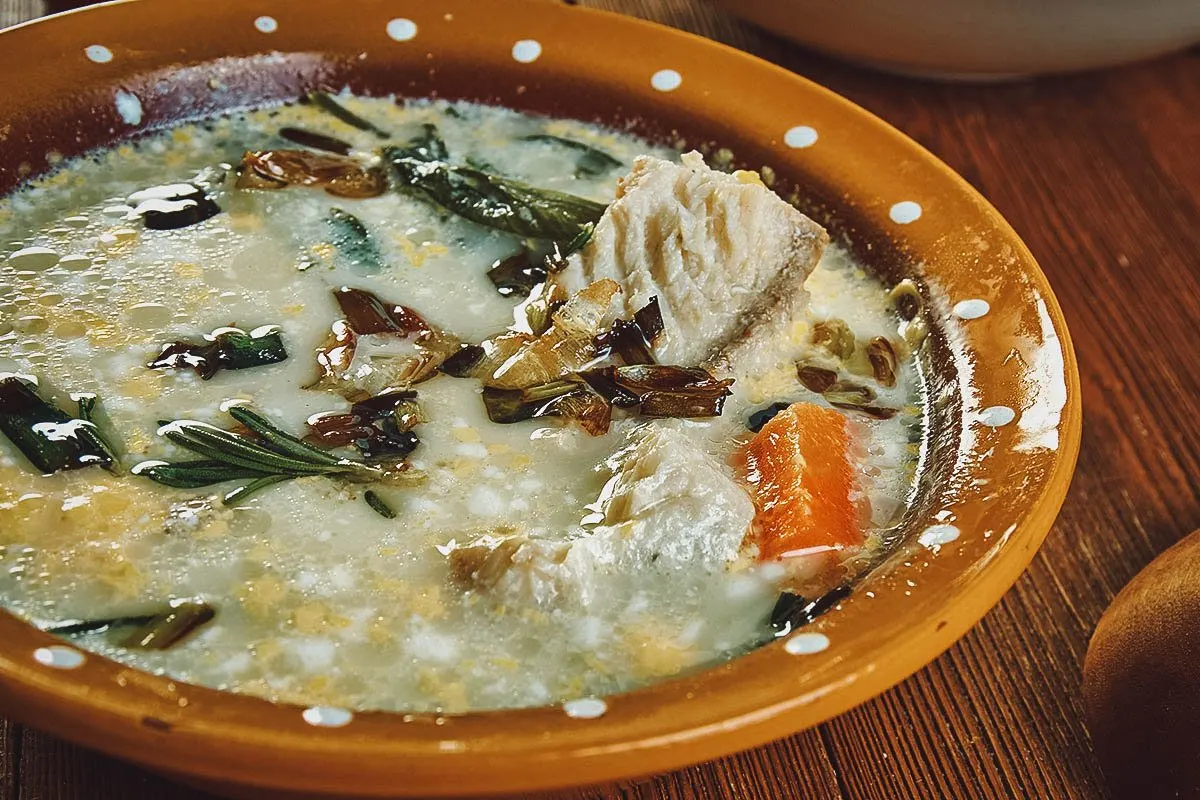
Photo by fanfon
MEAT / POULTRY
10. Steak Frites
If mussels with fries don’t do it for you, then perhaps steak frites is more up your alley.
Steak frites refers to a simple pairing of beef steak, usually entrecôte, and Belgian fries. It’s equally popular in Belgium and France where it’s typically made with prime cuts of beef like rib eye and porterhouse served with a gravy or sauce.
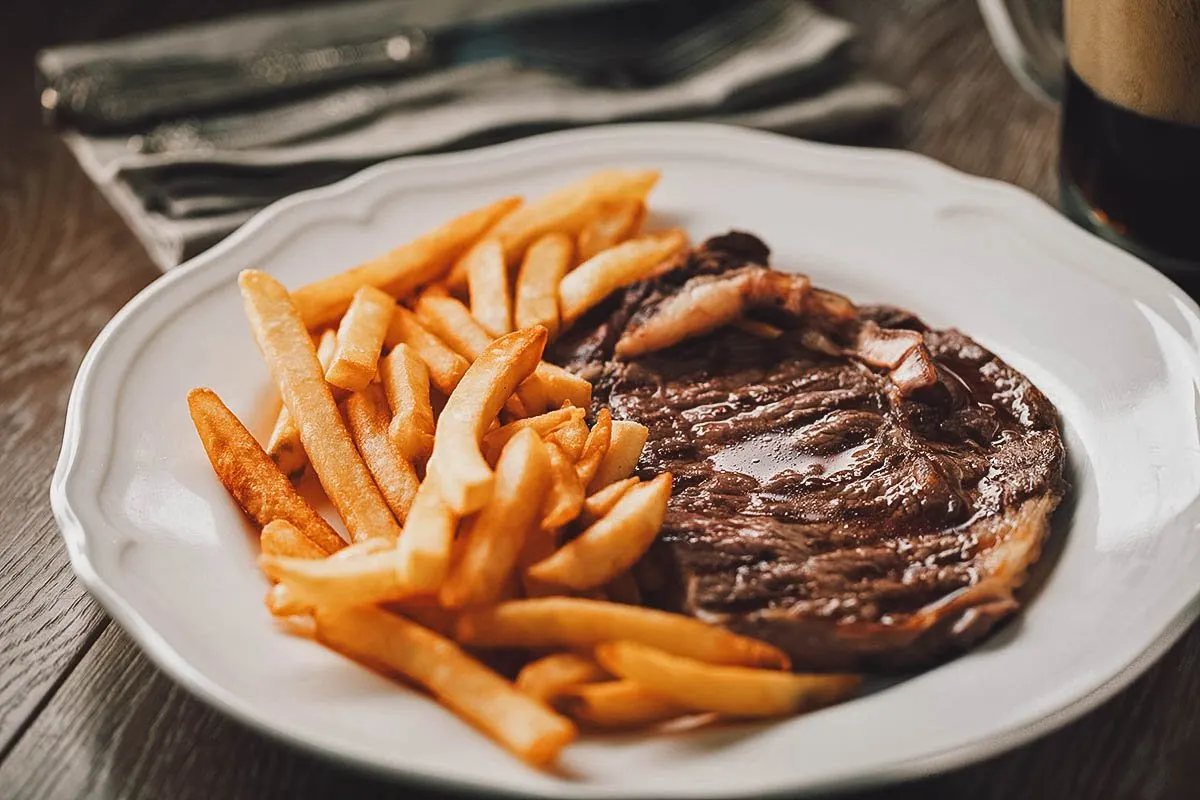
Photo by svariophoto
11. Boulet a la Liegeois
If you like meatballs, then you’re going to enjoy boulet a la liegeois. Originally from Liège, it refers to a dish made with meatballs drenched in a rich, sweet and sour sauce.
Belgian meatballs are typically made with pork and beef (or pork and veal) mixed with breadcrumbs, onions, and parsley. They’re cooked in a pan till golden brown and then coated in a sour-sweet sauce made from vinegar, onions, brown sugar, and sirop de Liège. Sirop de Liège refers to a type of Belgian jam or spread made from apples and pears.
Depending on where you are in Belgium, meatballs may be served with a different type of sauce. Boulet a la liegeois is popular in French-speaking regions but in Flanders, meatballs are usually smothered in tomato sauce or fried in butter with Belgian cherry sauce.
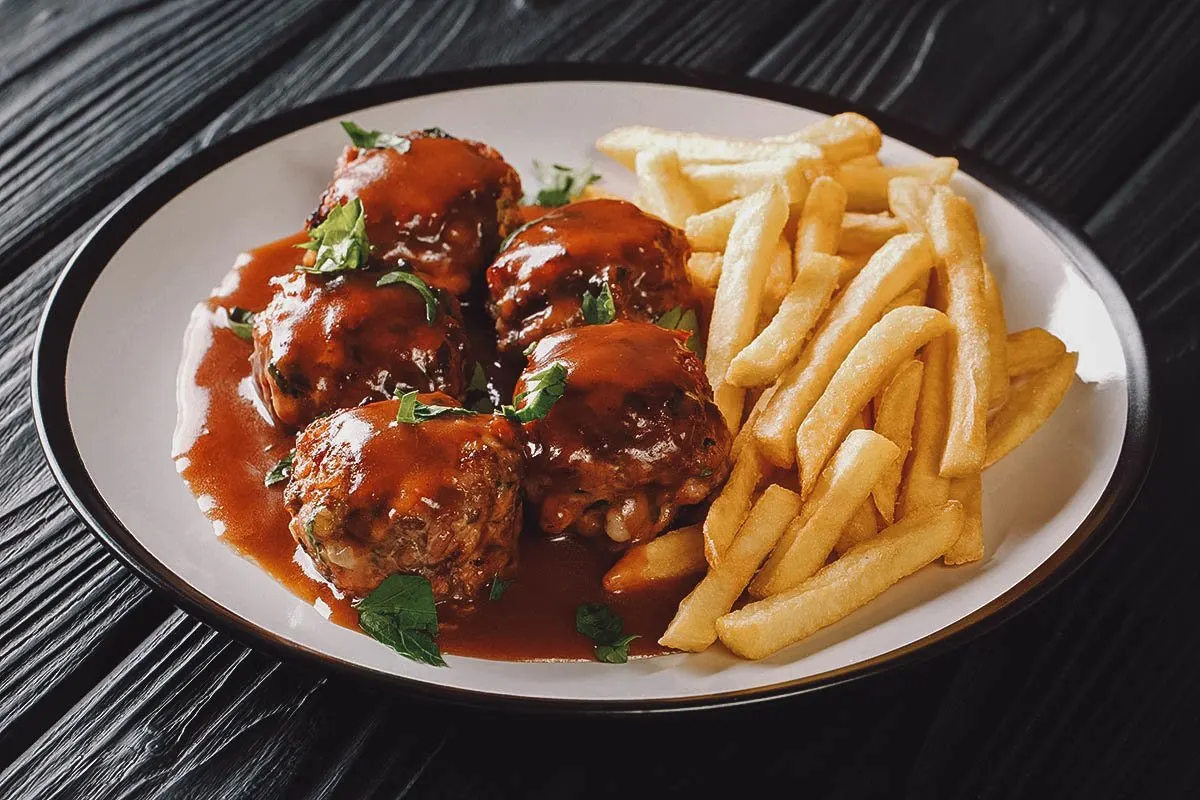
Photo by lenyvavsha
12. Carbonnade a la Flamande
As its name suggests, carbonnade a la flamande refers to a type of Flemish stew made with beef, lots of onions, and Belgian beer. It’s typically made with beef though it can also be made with pork. Other ingredients include mustard (or vinegar), thyme, bay leaves, juniper berries, brown sugar, and butter.
Like many Belgian dishes, carbonnade a la flamande is commonly served with Belgian fries. It can also be paired with stoemp or boiled potatoes.
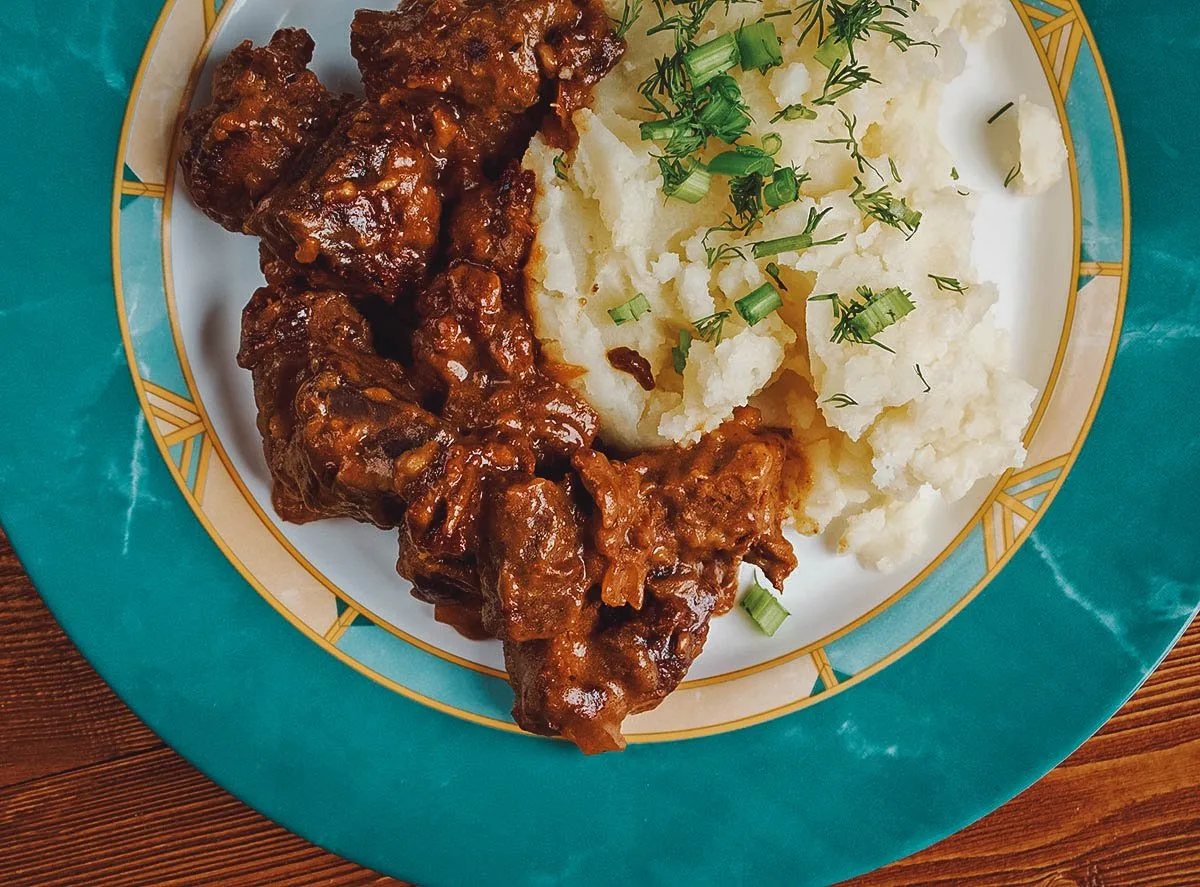
Photo by fanfon
13. Chicons au Gratin
Chicons au gratin refers to a classic and comforting dish made with Belgian endives wrapped in slices of ham. The ham-wrapped Belgian endive is covered in a rich mornay sauce and grated cheese before being baked to a golden brown.
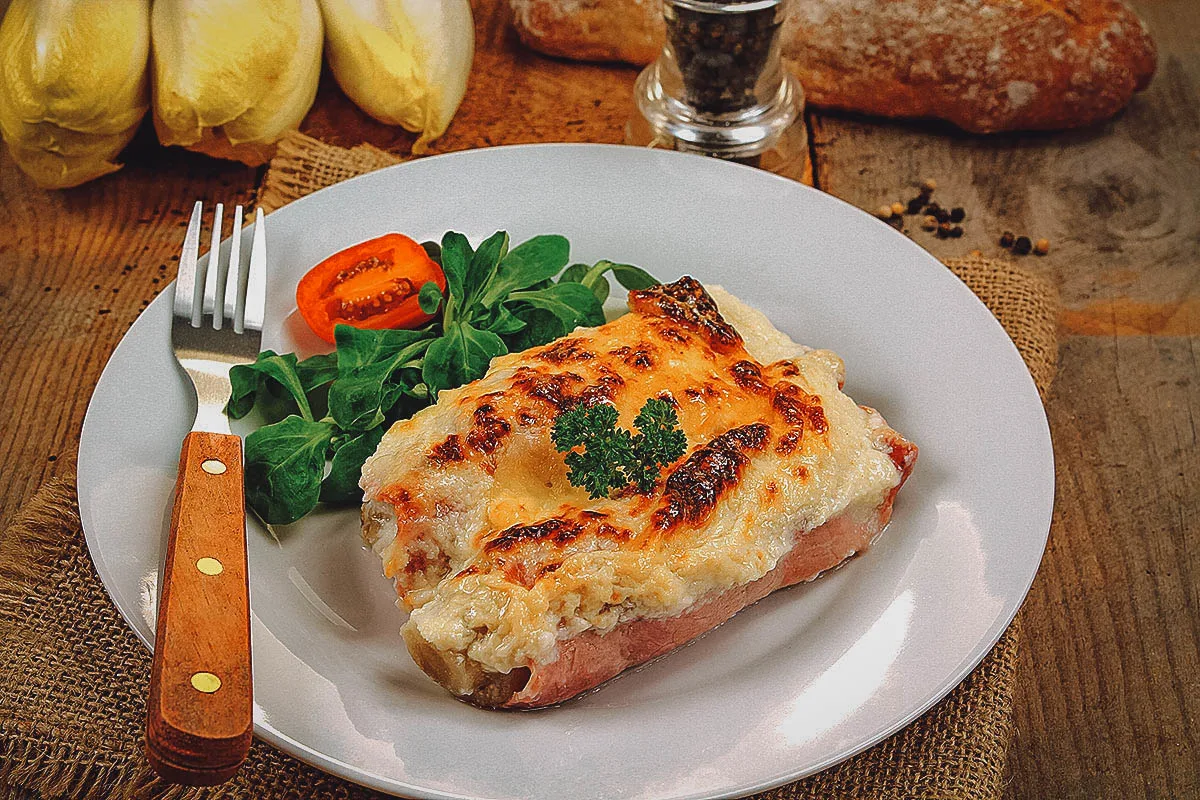
Photo by frederiquewacquier
DESSERTS
14. Belgian Chocolate
Like Belgian beer, Belgium is famous for its chocolates. Chocolate production has been a major industry in Belgium since the 19th century and forms a big part of its culture and identity, not to mention its economy.
Like Switzerland, Belgium is one of the biggest and most important producers of chocolate in Europe. They import cocoa from Africa, Central America, and South America to produce an estimated 172,000 tons of chocolate each year.
There are over 2,000 chocolatiers in Belgium producing a wide variety of Belgian chocolates, two of the most recognizable being pralines and truffles. Pralines (pictured below) refer to any type of filled Belgian chocolate.
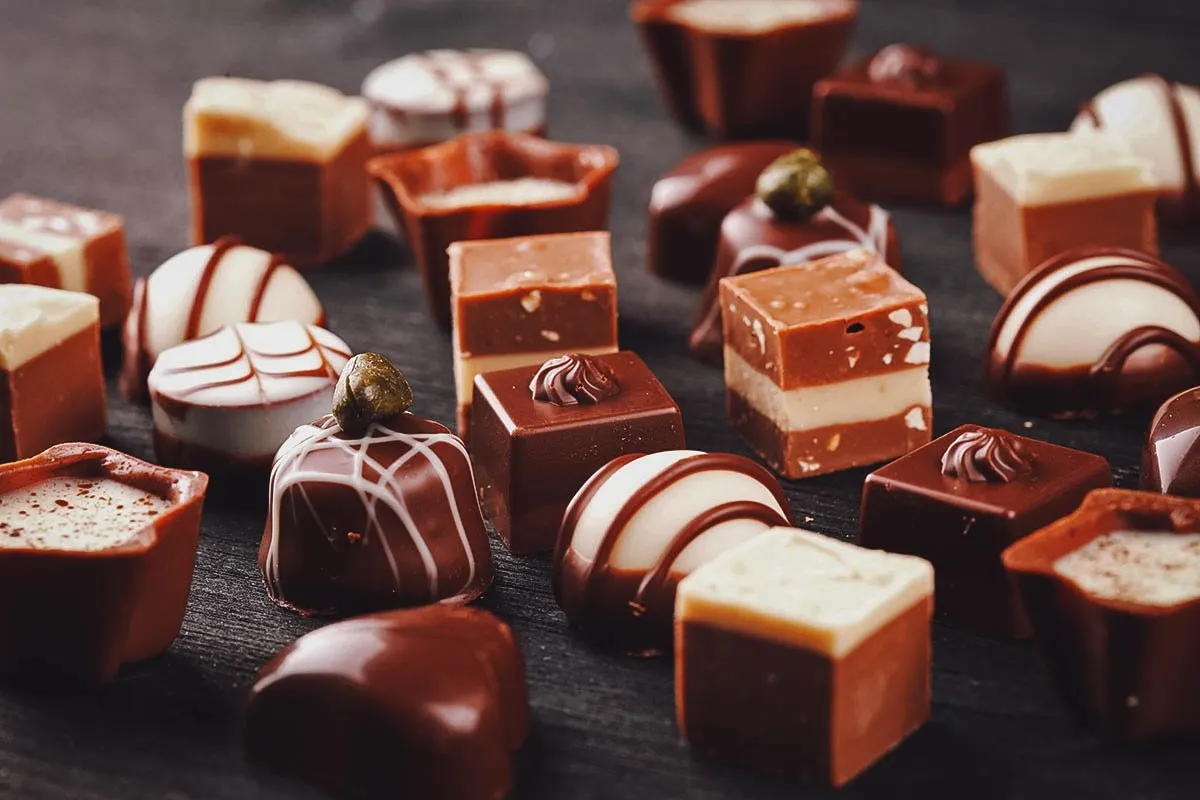
Photo by beats1
Pralines may be prettier but in my opinion, Belgian truffles are the best. Truffles are lumps or balls of ganache-filled chocolates often coated in a high-quality cocoa powder. They get their name from their resemblance to the highly-prized truffle fungus.
No matter what your preference, if you have a taste for chocolate, then you’re going to love Belgium.
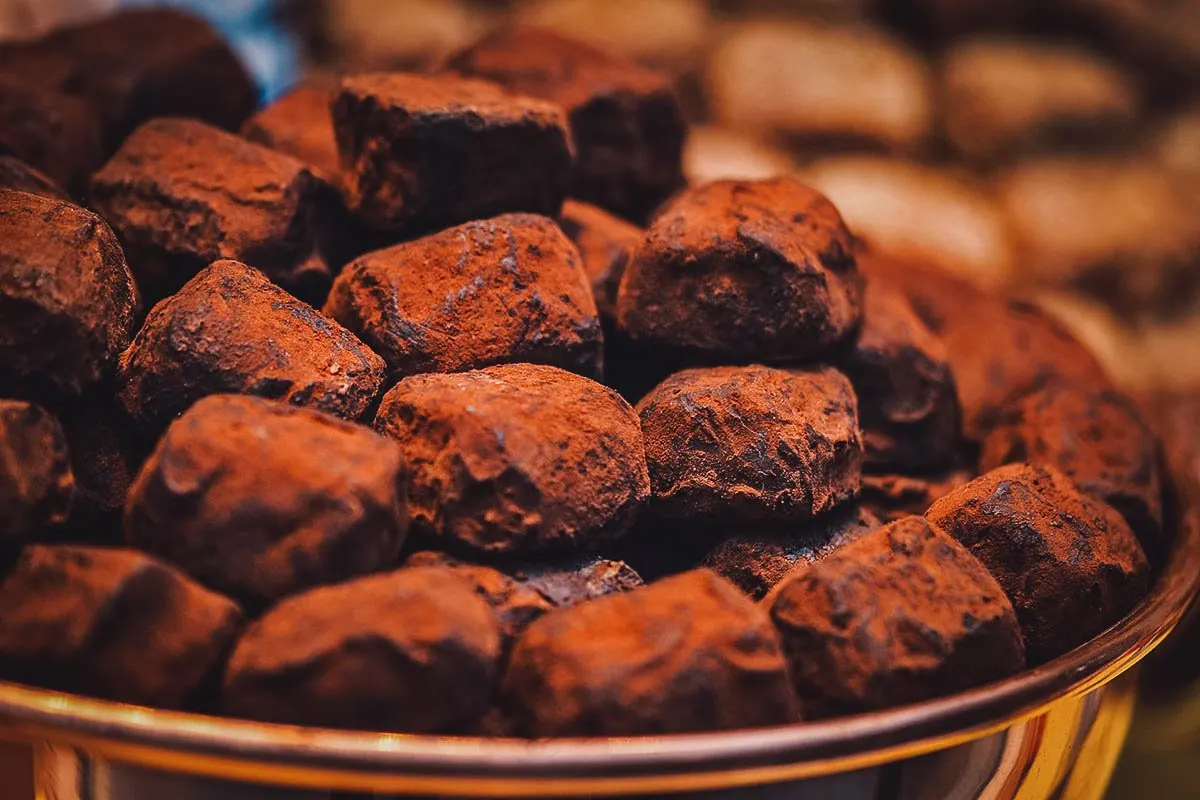
Photo by Anaisia29
15. Speculoos
Speculoos refers to a type of Belgian cookie or biscuit. They’re very similar to Dutch speculaas, except they’re made with fewer spices which were considerably more expensive to import into Belgium compared to the Netherlands. Speculoos biscuits were created as a cheaper alternative to speculaas.
Unlike speculaas which is made with a variety of spices like cloves, cardamom, nutmeg, and ginger, speculoos is made with wheat flour, fat, candy syrup, and sometimes cinnamon. In the US and the UK, they’re sold as Biscoff.
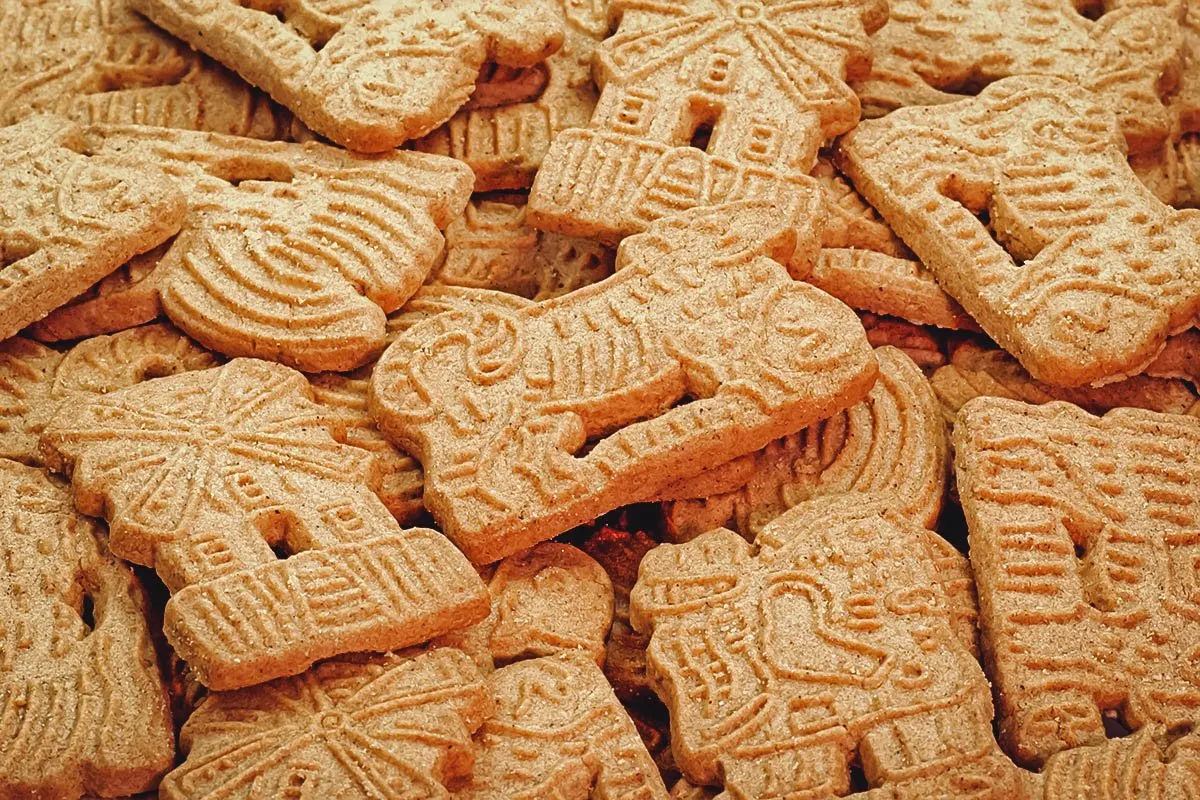
Photo by saphira
16. Cuberdon
If Belgian chocolates aren’t enough to satisfy your sweet tooth, then perhaps you’d like to try cuberdons as well. Originally from Ghent, it’s a cone-shaped Belgian candy made with a gum arabic candy crust stuffed with a soft, raspberry-flavored filling. They’re traditionally colored purple but they’re now commonly made into other colors as well.
In Flemish, cuberdon is also referred to as neus (“nose”) because of its resemblance to a human nose. In French, they’re also called chapeau-de-curé, meaning “priest’s hat”.
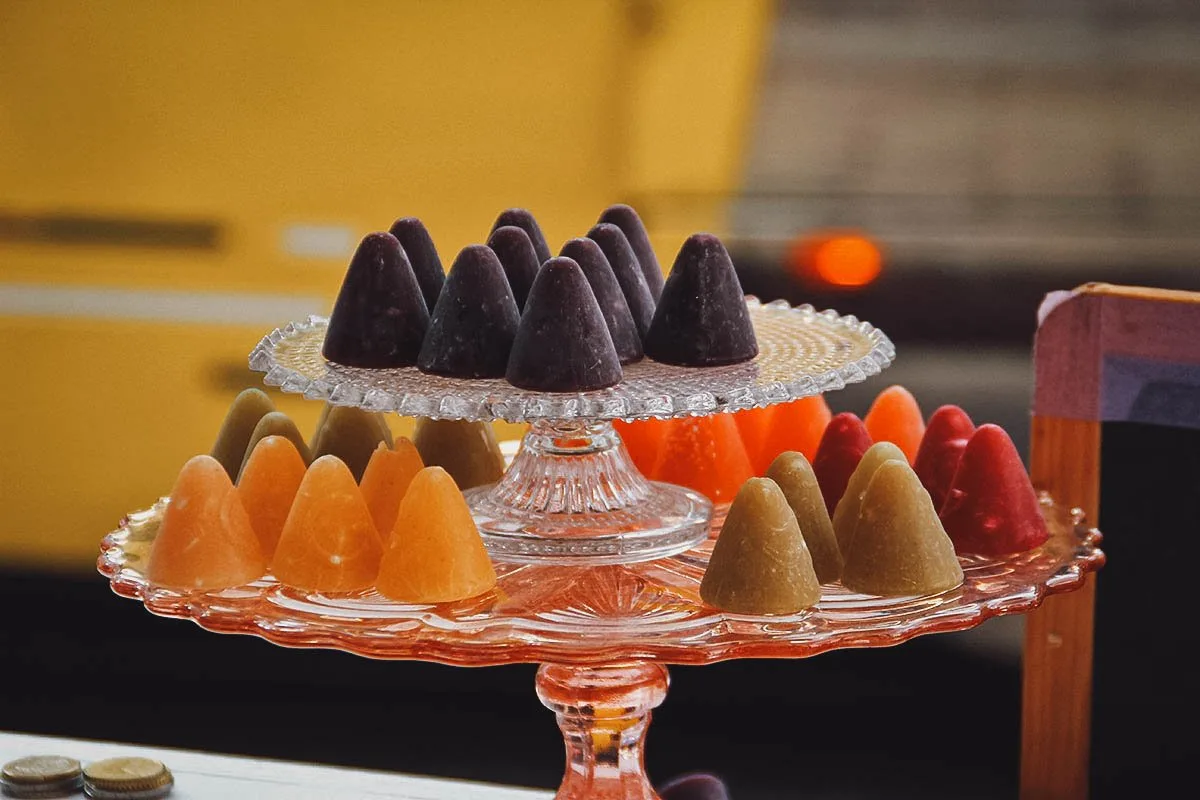
Photo by Milva_El
17. Rijstevlaai
Rijstevlaai is a type of single crust Belgian pie made with a rice pudding filling. It’s native to the city of Verviers in Liège and is especially popular in eastern Belgium, southeastern Netherlands, and the German region around Aachen.
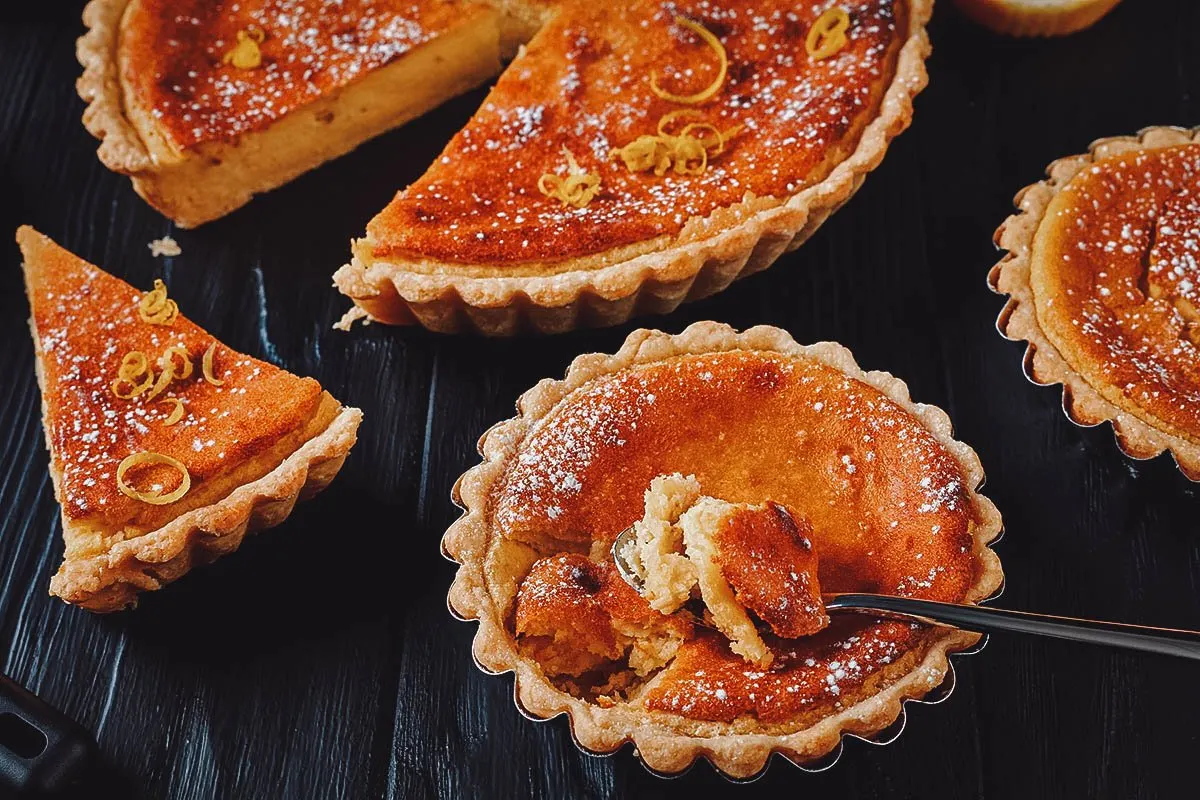
Photo by myviewpoint
18. Oliebollen
If you like donuts, then you need to try oliebollen. It refers to a type of beignet that’s popular in Dutch and Belgian cuisine.
The oliebol is essentially a type of drop donut made with yeasted dough, currants, raisins, and other dried fruits. They’re drizzled with a generous amount of powdered sugar and are traditionally prepared to welcome the new year.
In Flanders, oliebollen are also referred to as smoutebollen while in Wallonia, they’re known as croustillons.
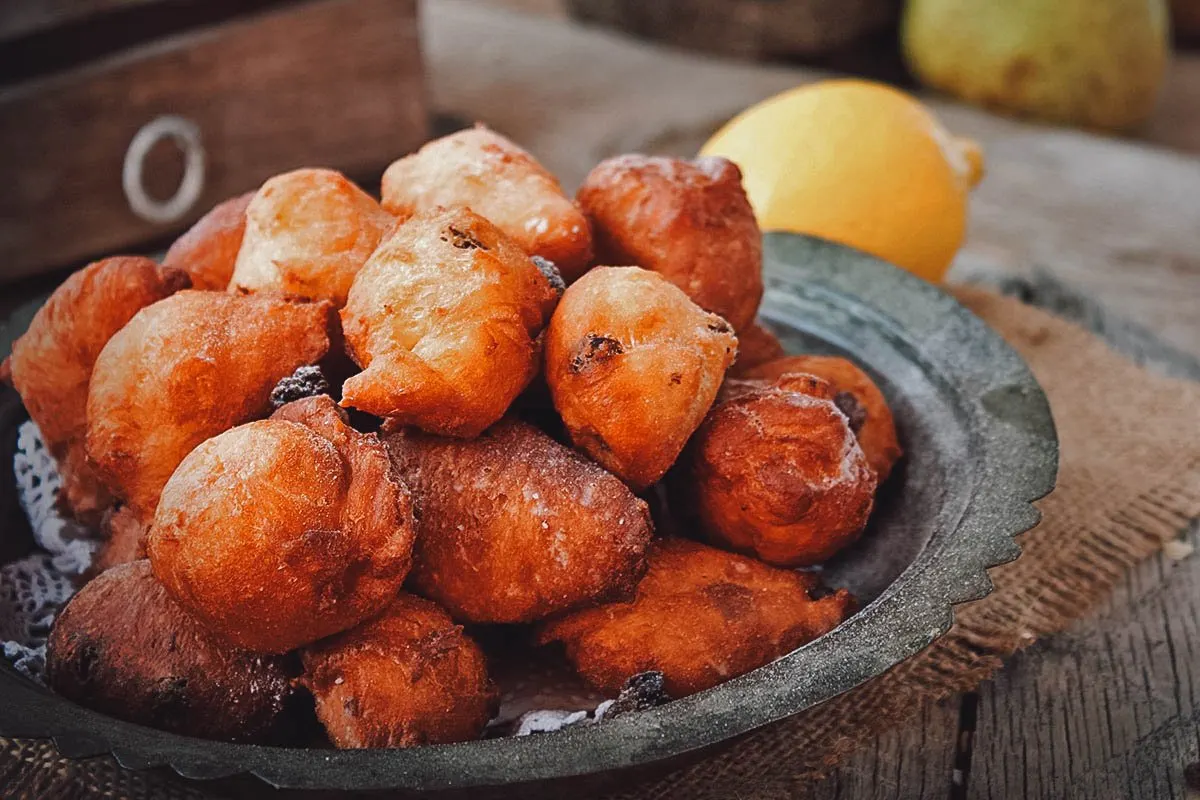
Photo by mythja
DRINKS
19. Belgian Beers
According to the Brewers of Europe website, Belgians drink an average of about 68 liters of beer per year. Assuming that the average bottle contains about 330 ml, that translates to about four bottles of beer per Belgian per week.
An impressive number, until you learn that Belgians consumed an average of 200 liters of beer per year in 1900. That translates to almost twelve bottles of beer a week for every Belgian! To say that beer has long been an important part of Belgian cuisine and culture would be an understatement.
You could devote an entire website to Belgian beer so I won’t get into it in too much detail here. Just know that there are roughly 1,500 brands of beer in Belgium with over 700 different flavor profiles. From Trappist beers to pils to Lambic beers and Flemish red ales, there really is a beer for everyone in Belgium.
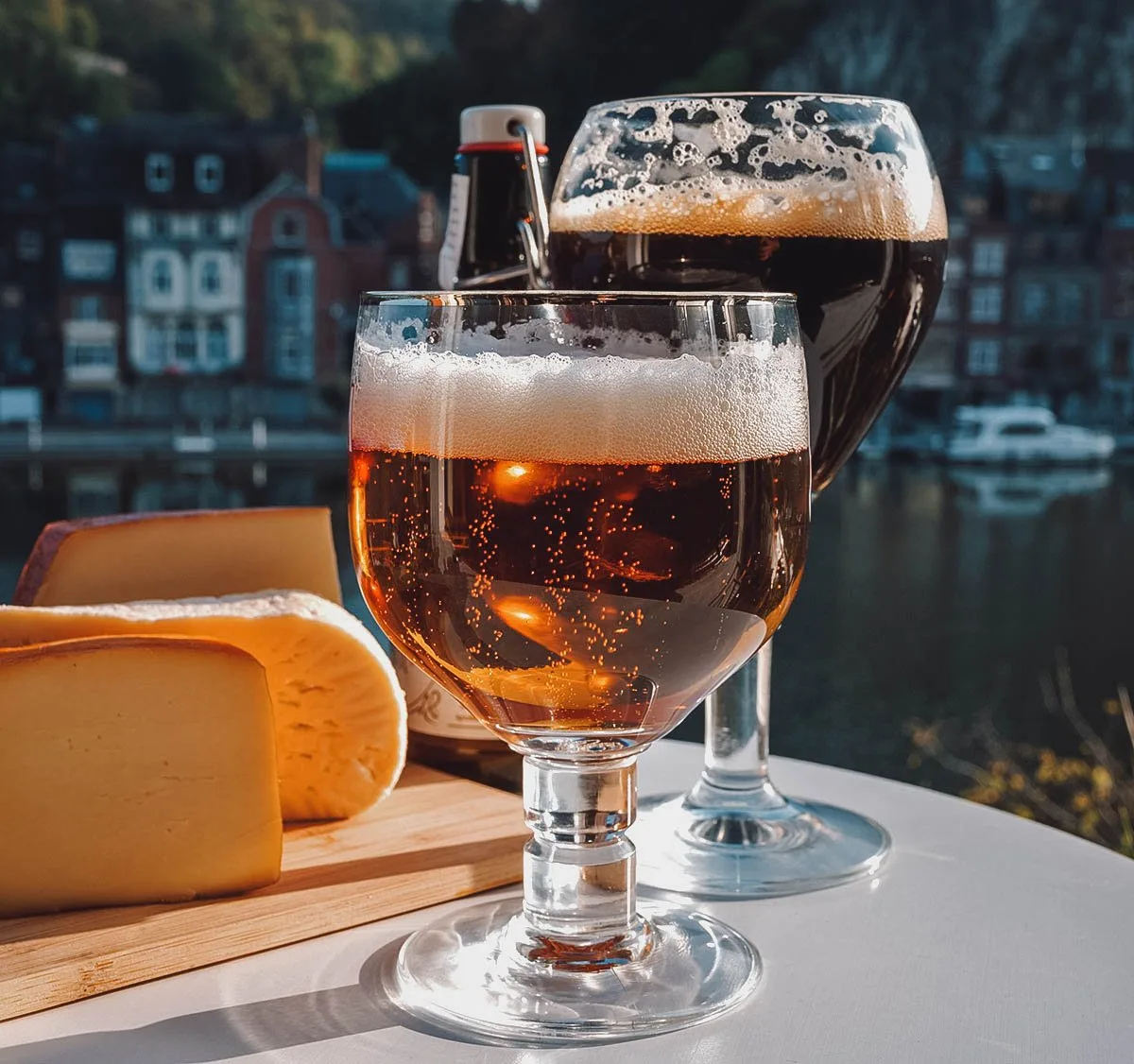
Photo by foto-pixel.web.de
20. Jenever
Belgian beers will keep you plenty busy but if you’re fond of spirits, then you should try jenever as well, especially if you like gin.
Also known as genièvre, jenever refers to a type of juniper-flavored liquor popular in Belgium, the Netherlands, and parts of Germany and France. It enjoys Protected Designation of Origin status and is said to be the spirit from which gin evolved.
Ranging in flavor from neutral, like vodka, to aromatic and malty like whisky, jenever has long been considered the national spirit of Belgium.

Photo by bhofack2
FINAL THOUGHTS ON TRADITIONAL BELGIAN FOODS
Belgian waffles and fries may be hard to resist but as you can see in this Belgian food guide, they’re hardly the only dishes worth pining for in Belgium. Belgian meatballs and beef stew are universally appealing while filet americain and paling in ‘t groen will excite more adventurous eaters.
Whatever you decide to eat in Belgium, just be sure to wash it down with a few pints of Belgian beer. Nowhere in the world will you find beer as good as this so enjoy as much of it as you can, while you can.
Proost op onze lever!
Disclosure
Some of the links in this article on traditional Belgian foods are affiliate links, meaning we’ll get a small commission if you make a booking at no additional cost to you. As always, we only recommend products and services that we use ourselves and firmly believe in. We really appreciate your support as it helps us make more of these free travel and food guides. Thank you!
Cover photo by klenova. Stock images via Depositphotos.

